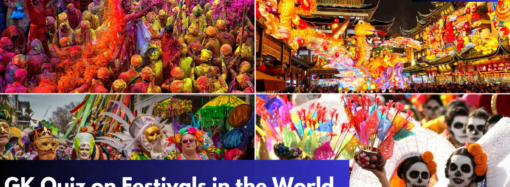
Read Editorial – Life Elsewhere
READ BEFORE YOU PROCEED: D2G wears no responsibility of the views published here by the respective Author. This Editorial is used here for Study Purpose. Students are advised to learn the word-meaning, The Art of Writing Skills and understand the crux of this Editorial.
Read Editorial With DayTodayGK – Click to Explore more Editorials
MEANINGS are given in BOLD
The quest (search for something ) to find life outside the solar system got a big boost with the discovery of seven Earth-size extra-solar planets, or exoplanet, orbiting a dwarf (cause to seem small or insignificant in comparison) star about 40 light years away. Unlike earlier discoveries of exoplanets, all seven planets could possibly have liquid water — a key to life as we know it on Earth — with three planets having the greatest chance. This is by far the largest collection of Earth-like planets in the habitable (suitable or good enough to live in) ‘Goldilocks’ zone of a star — neither too close nor too far from a star, which raises the possibility of liquid water being present on the surface.
Only Earth has liquid water in the solar system. Less than a year after scientists announced the discovery of three planets orbiting the dwarf star, the team found four more through intense (of extreme force, degree, or strength) searches using several ground-based telescopes, including a 20-day continuous monitoring using the U.S. National Aeronautics and Space Administration’s Spitzer Space Telescope. Since the dwarf star is much cooler than the Sun, the dimming (make or become less bright or distinct) of light each time a planet passes or transits before the star could be easily recorded from Earth unlike in cases when planets transit a Sun-like bright star.
Since the initial discovery of three planets was made using the Chile-based Transiting Planets and Planetesimals (a minute planet; a body which could come together with many others under gravitation to form a planet) Small Telescope, the exoplanet system is called TRAPPIST-1. Unlike in the case of our solar system, the planets have apparently formed far away from the star and gradually migrated towards it; they share a similar formation history with the Galilean moons, which migrated towards Jupiter after formation.
Another major difference in comparison with the solar system is the tight packing of the seven planets around the star. The closest planet in the TRAPPIST-1 system takes just 1.5 days to complete an orbit and the farthest one takes 20 days; the orbital period of the planets is also similar to the Galilean moons.With a fair possibility of liquid water being present on at least three planets, the focus is now on deciphering (succeed in understanding, interpreting, or identifying (something)) the climate and chemical composition of their atmosphere.
As a first measure, scientists are keen (sharp or penetrating, in particular) to know if the planets are Earth-like, by ruling out the presence of hydrogen gas enveloping them. Mass estimates already suggest that the inner six planets might have a rocky composition, while the one with a low density may have a volatile (liable to change rapidly; (of a substance) easily evaporated at normal temperatures) composition due to the presence of an ice layer or atmosphere. The composition of the atmosphere can be identified by measuring the wavelength characteristics of light. Since the TRAPPIST-1 system is close by and the star is cool enough, it would be easier to decipher the various critical features of the planets. If there is life on these planets, we would know this in about 10 years. The search for extraterrestrial (of or from outside the earth or its atmosphere) life has just become more focussed.
[mks_button size=”medium” title=”Also Read Editorial – Episode Number 292″ style=”squared” url=”https://www.daytodaygk.com/read-editorial-d2g-ep-292/” target=”_blank” bg_color=”#dd1616″ txt_color=”#FFFFFF” icon=”fa-square” icon_type=”fa” nofollow=”0″] [mks_button size=”medium” title=”Become a Wordsmith – A Skilled User of Words” style=”squared” url=”https://www.daytodaygk.com/category/treasure/wordsmith-daytodaygks-glossary/” target=”_blank” bg_color=”#0166bf” txt_color=”#FFFFFF” icon=”fa-square” icon_type=”fa” nofollow=”0″]






